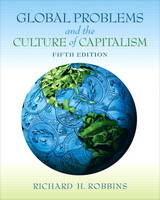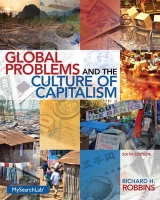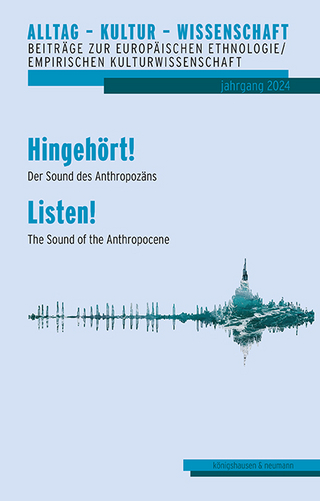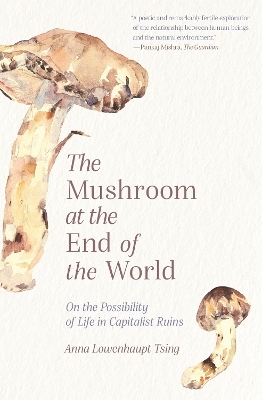
Global Problems and the Culture of Capitalism
Pearson (Verlag)
978-0-205-80105-3 (ISBN)
- Titel erscheint in neuer Auflage
- Artikel merken
From capitalism's European roots more than 500 years ago to the present, this text examines the problems caused by its expansion, inequality, environmental destruction, and social unrest.
Global Problems and the Culture of Capitalism provides any reader with the anthropological, economic, and historical framework to understand the origins of global problems, why globalization and the global expansion of the culture of capitalism has generated protest and resistance, and the steps necessary to solve global problems.
Up-to-date information throughout the text helps students maintain a current view of the rapidity of global change.
As one reviewer says, “In today's world of global cultures, the key to solving the problems of the future depends on understanding the cultures of today. Robbins' book spells this out in clear and easy-to-read prose. It is the one book that every college student should be required to read.”
Richard H. Robbins is an anthropologist at the State University of New York at Plattsburgh with an interest in applying anthropology, as well as other disciplines, to the understanding of global problems. His other publications include Talking Points on Global Issues: A Reader and Darwin and the Bible: The Cultural Confrontation.
Preface
Part One Introduction: The Consumer, the Laborer, the Capitalist, and the Nation-State in the Society of Perpetual Growth
Introduction
A Primer on Money
Chapter One: Capitalism and the Making of the Consumer
Culture and the Construction of the Consumer
The Construction of the Consumer
Kinderculture in America: The Child as Consumer
The Role of Children in Capitalism
The Social Construction of Childhood
Conclusion
Chapter Two: The Laborer in the Culture of Capitalism
A Primer on the Economic Elements of Capitalism
The Baptism of Money
The Construction and Anatomy of the Working Class
Characteristics of the Working Class
The Growth of Overseas Assembly Plants
The Creation of Free Labor
The Segmentation of the Workforce
Control and Discipline
Resistance and Rebellion
Conclusion
Chapter Three: The Rise of the Merchant, Industrialist, and Capital Controller
The Era of the Global Trader
A Trader’s Tour of the World
The Economic Rise of Europe and Its Impact on Africa and the Americas
The Rise of the Trading Companies
The Era of the Industrialist
Textiles and the Rise of the Factory System
The Age of Imperialism
The Era of the Corporation, the Multilateral Institution, and the Capital Controller
The Rise of the Corporation
Bretton Woods and the World Debt
The Power of Capital Controllers
Conclusion
Chapter Four: The Nation-State in the Culture of Capitalism
The Origin and History of the State
The Evolution of the State
The History and Function of the Nation-State
Constructing the Nation-State
Creating the Other
Language, Bureaucracy, and Education
Violence and Genocide
Spin, Free Trade, and the Role of Energy in the Global Economy
Manufacturing Consent: Spin
Markets and Free Trade
Energy and Technology
Conclusion
Part Two Introduction: The Global Impact of the Culture of Capitalism
Chapter Five: The Problem of Population Growth
The Malthusians versus the Revisionists
The Case of India and China
The Issue of Carrying Capacity
The Ideology of Malthusian Concerns
Demographic Transition Theory
A Primer on the Determinants of Population Growth and Decline
Some Examples of Demographic Change
Population Growth in the Periphery
Wealth Flows Theory
The Social Implications of Wealth Flows Theory
The Question of Gender and Power
Problems and Prospects
Conclusion
Chapter Six: Hunger, Poverty, and Economic Development
The Evolution of Food Production: From the Neolithic to the Neocaloric
From Gathering and Hunting to the Neolithic Capitalism and Agriculture
The Neocaloric and the Green Revolution
The Politics of Hunger
The Anatomy of Famine
The Anatomy of Endemic Hunger
Solutions and Adaptations to Poverty and Hunger
Economic Development
The Nature and Growth of the Informal Economy
The Nature and Scope of the Informal Economy of Drugs
Conclusion
Chapter Seven: Environment and Consumption
The Case of Sugar
Sugar Origins and Production
Uses of Sugar
The Development of the Sugar Complex
The Expansion of Sugar Consumption
The Mass Consumption of Sugar
Modern Sugar
The Story of Beef
The Ascendancy of Beef
The Emergence of the American Beef Industry
Modern Beef
The Internationalization of the Hamburger
Environmentally Sustainable Cattle Raising
Exporting Pollution
Conclusion
Chapter Eight: Disease
A Primer on How to Die of an Infectious Disease
The Relationships between Culture and Disease
Gathering and Hunting to Early Agriculture
“Graveyards of Mankind”
Diseases of Environmental Change
AIDS and the Culture of Capitalism
How Did the Disease Spread?
Who Gets Infected with AIDS?
Who Gets Blamed?
Conclusion
Chapter Nine: Indigenous People, Ethnic Groups, and the Nation-State
The Fate of Indigenous Peoples
Some Characteristics of Indigenous Peoples
The Process of Ethnocide
The Guaraní: The Economics of Ethnocide
History and Background
Contemporary Development and Guaraní Communities
Disadvantaged Majorities and Their Revenge
Leveling Crowds
Genocide and an Externality of the Market
“Ethnic Cleansing” in Yugoslavia
Genocide in Rwanda
Conclusion
Part Three Introduction: Resistance and Rebellion
Chapter Ten: Peasant Protest, Rebellion, and Resistance
Malaysiaand the Weapons of the Weak
Malaysian Peasants and the Green Revolution
Fighting Back
Obstacles to Resistance
Protest and Change
Kikuyu and the Mau Mau Rebellion
The British in East Africa
The White Highlands
The Roots of the Rebellion
The Rebellion
“State of Emergency”
The Oath and the Detention Camps
Independence
The Rebellion in Chiapas
Poverty and Inequality in Chiapas
The Rebellion and the Global Economy
The Revolt and the Reaction of the Mexican Government /
The Future of Peasants
Conclusion
Chapter Eleven: Antisystemic Protest
Protest as Antisystemic: The Two World Revolutions
The Revolution of 1848
The Revolution of 1968
The Protests of Labor: Coal Miners in Nineteenth-Century Pennsylvania
The Coal Industry and the Worker’s Life
Worker Resistance and Protest
Destroying Worker Resistance
Global Feminist Resistance
Gender Relations in the Culture of Capitalism
Strategies of Protest
Ecological Resistance Movements
Earthfirst!
Chipko and the Tragedy of the Commons
Conclusion
Chapter Twelve: Religion and Antisystemic Protest
Indigenous Religious Movements as Protest
The Ghost Dance
The Cargo Cults
Zionism in South Africa
The Global Challenge of Antisystemic Religious Protest
Islamic Fundamentalism
Protestant Fundamentalism in North America
Terror in the Mind of God
Some Examples of Religious Violence
The Militants of Protestant Fundamentalists
Terror in the Holy Land
Armageddon in a Tokyo Subway
Understanding Religious Violence
Conclusion
Chapter Thirteen: Constructing the Citizen-Activist
What Are the Real Dangers?
The GNP and the Construction of the Doctrine of Perpetual Growth
The Depletion of Natural Capital
The Depletion of Political Capital
The Depletion of Social Capital
Capital and Public Policy
Constructing the Citizen-Activist
Indices and Goals for Well-Being
The Means and Prospects for Change: Attaining Zero Economic Growth
Rebuilding and Maintaining Natural Capital
Restoring Political Capital
Rebuilding Social Capital
Conclusion
| Erscheint lt. Verlag | 1.7.2010 |
|---|---|
| Sprache | englisch |
| Maße | 203 x 254 mm |
| Gewicht | 655 g |
| Themenwelt | Sozialwissenschaften ► Ethnologie |
| Sozialwissenschaften ► Politik / Verwaltung | |
| Sozialwissenschaften ► Soziologie | |
| ISBN-10 | 0-205-80105-6 / 0205801056 |
| ISBN-13 | 978-0-205-80105-3 / 9780205801053 |
| Zustand | Neuware |
| Haben Sie eine Frage zum Produkt? |
aus dem Bereich



